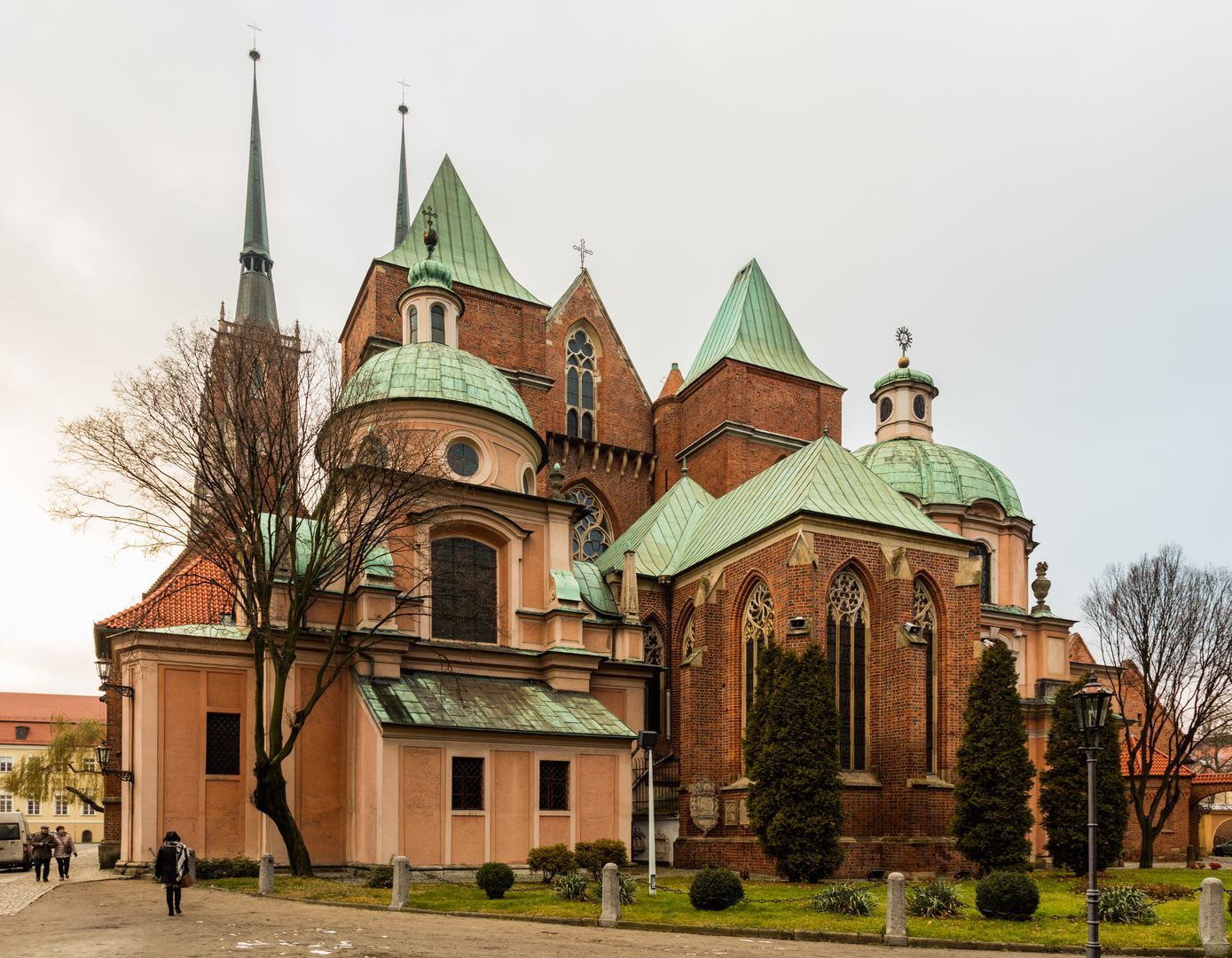St. John the Baptist Cathedral in Wrocław
6.76

Overview
The Archcathedral of St. John the Baptist in Wrocław, located on Cathedral Island (Ostrów Tumski), is a Gothic three-nave basilica built in the 13th–14th centuries. The current structure is the fourth cathedral on this site, expanded with Baroque elements and having undergone numerous restorations following wartime destruction. Measuring 98 meters in length and 44.5 meters in width, the cathedral is distinguished by its sturdy towers and architecture that reflects the Gothic style. The interior is divided into clearly marked sections, with an elevated choir that features remarkable vaulting. The altarpiece "The Dormition of the Virgin Mary," a late Gothic work from 1522, and Baroque stalls from 1662–1665 highlight the richness of the church's furnishings. The cathedral is surrounded by chapels, including the Chapel of St. Elizabeth, attributed to the Italian architect Giacomo Scianzi. The cathedral organ, built in 1913, has undergone many modifications and is now one of the largest in Poland, with 151 stops. The cathedral is a site of numerous commemorations, including plaques dedicated to Frédéric Chopin and soldiers of the Home Army (Armia Krajowa). The history of the cathedral dates back to pre-Romanesque times, with many changes over the centuries, including burning towers and removed architectural details. During World War II, the cathedral was severely damaged, but reconstruction began after the war, and in 1991 new spires were installed on the towers, restoring the building's majestic appearance. Thus, the Archcathedral is not only an important religious site but also a significant element of Wrocław's cultural and historical heritage.
Location
Tickets
Powered by GetYourGuide
2025 Wizytor | All Rights Reserved